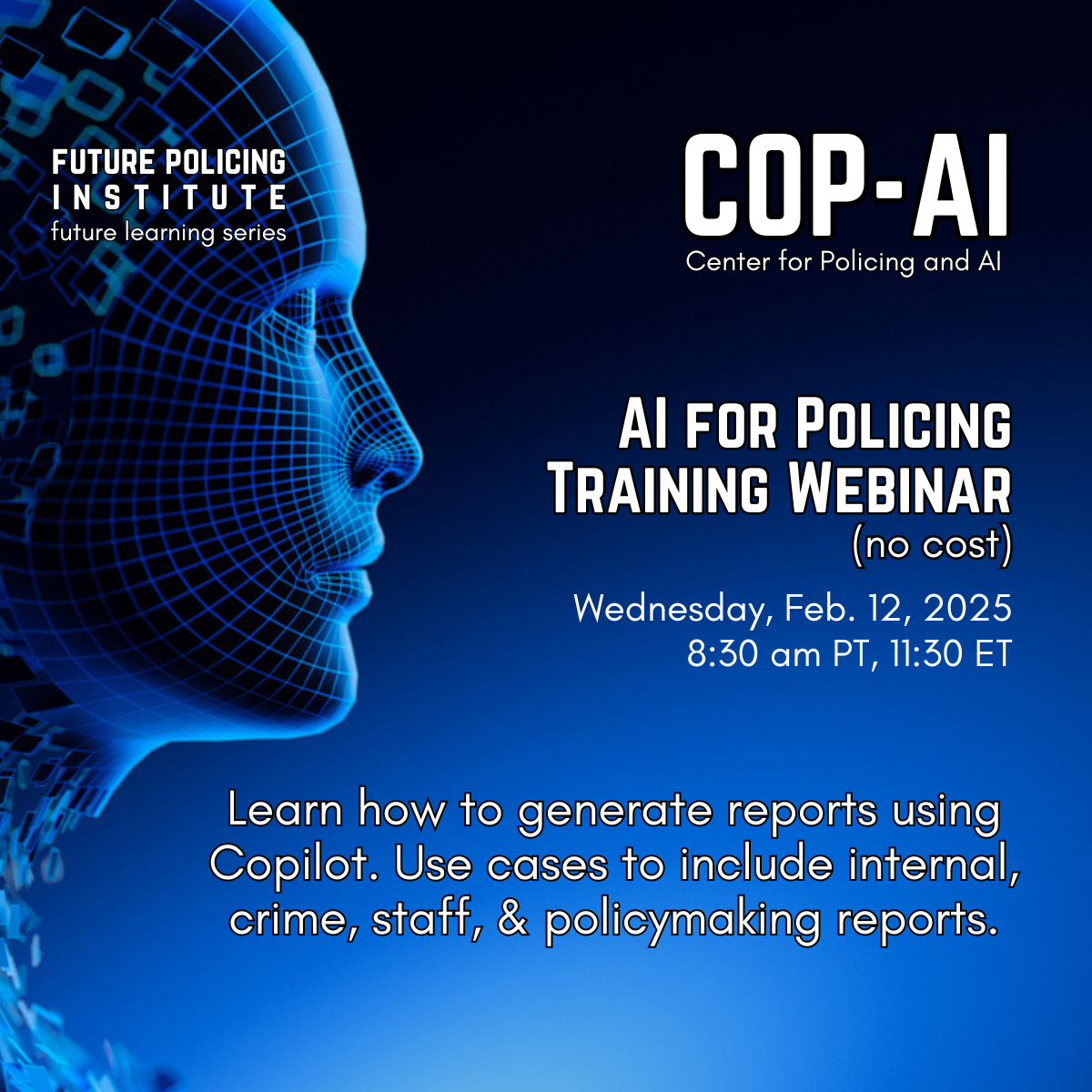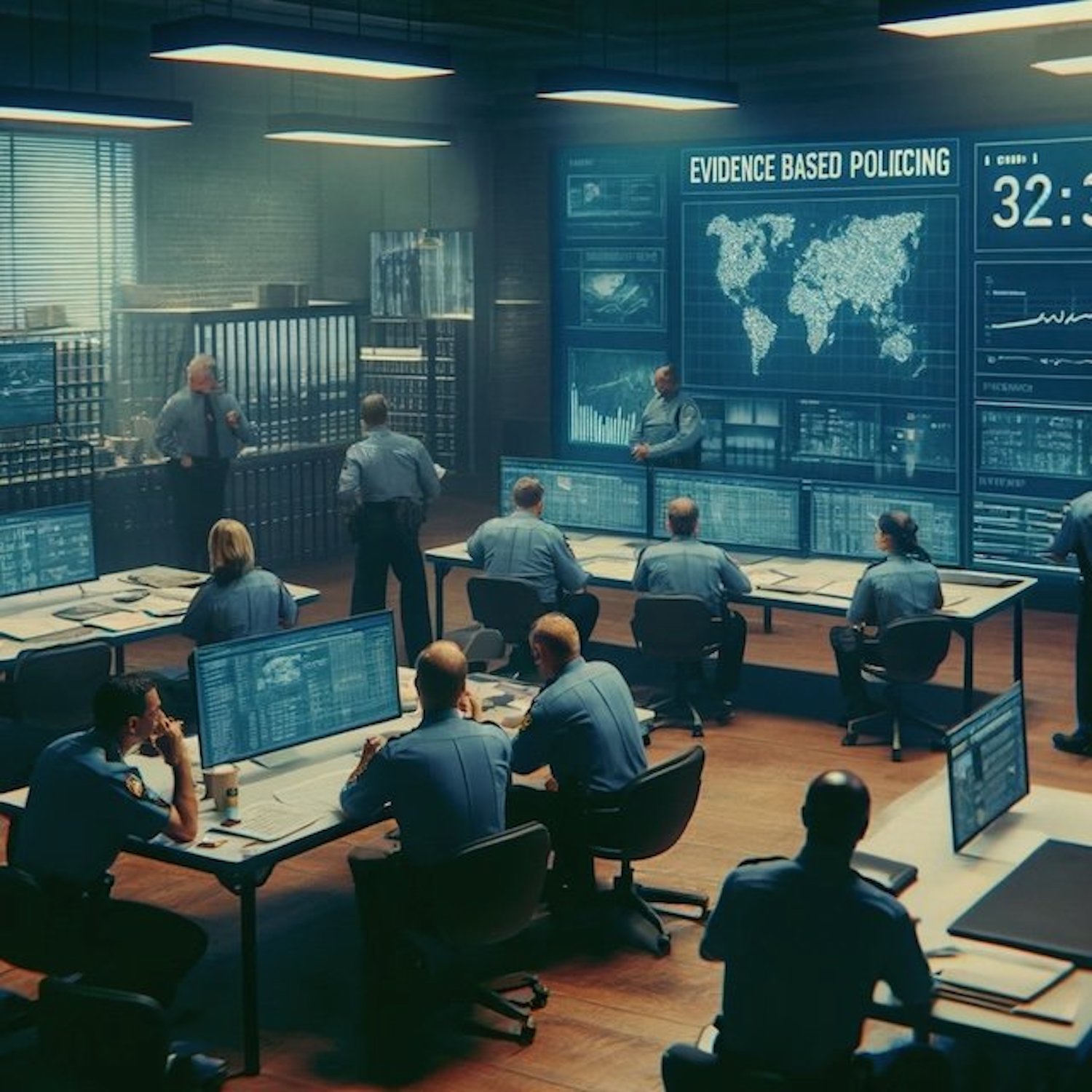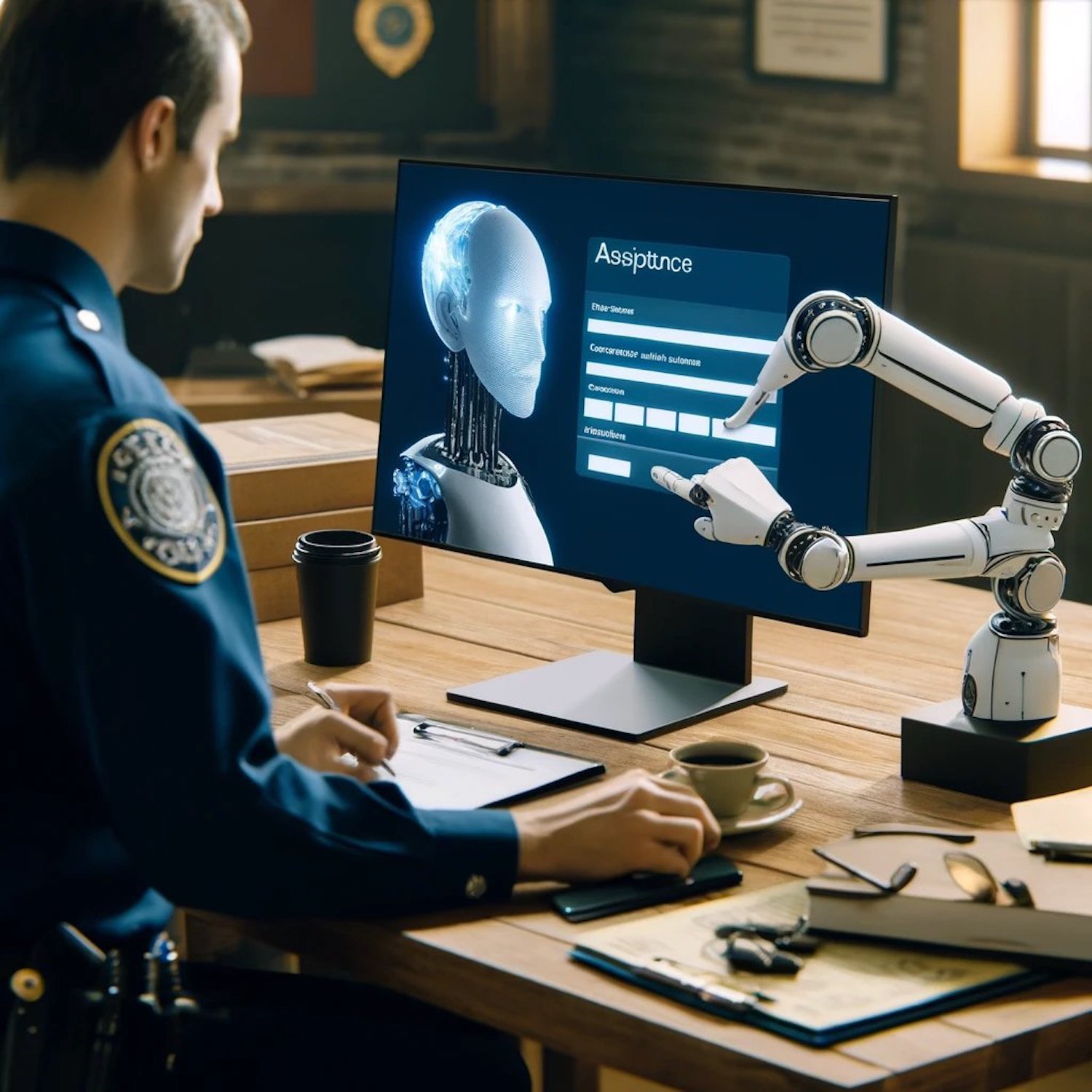Disclaimer: The views and opinions expressed by the Future of Policing Institute fellows are theirs and do not necessarily reflect the views or positions of any entities they represent.

Latest Episode of Policing in a Minute: Evidence Based Policing
This episode summarizes the essentials of evidence-based policing (EBP), an organizational strategy using the best available evidence to shape police crime control strategies. In brief, EBP reduces crime and boosts community trust.
EBP applies scientific methods to test the effectiveness of policing tactics – it's more than just data. It is proactive; proven tactics help officers target resources effectively to reduce harm and crime. And EBP enhances community trust by emphasizing fairness and accountability.
Evidence-based policing offers a practical and measurable way to achieve safer communities, enhanced community trust, and more effective, empathetic and just policing.

“Exhausted Cops:” A Policing in a Minute Series
Police fatigue is more than just feeling tired — it's a critical issue that affects officer safety, decision-making, and public trust. In this concise yet insightful Policing in a Minute podcast series, produced by the Future Policing Institute, we explore the hidden risks and profound consequences of police fatigue across four episodes.

Latest Episode of “Policing in a Minute” is Out
Discover one of the secrets of effective policing with the Policing in a Minute podcast about the Koper Curve! Take a quick dive into the groundbreaking principle developed by criminologist Chris Koper, which reveals how short, strategic patrols in high-crime areas can drastically reduce criminal activity. Learn how officers can maximize their impact, enhance community trust, and create safer neighborhoods with just 10-15 minute visits to high crime areas.

No cost webinar on using AI (Copilot) in Police Report Generation
Register now for the upcoming webinar on using AI (copilot) to more effectively and efficiently create a wide variety of policing reports. It will be at 8:30am PT on Wednesday, February 12, 2025. Registration is now open. Just click on the “read more” below to register.
Attendees will learn the multiple ways in which Copilot can be used to generate a variety of reports. Use cases will include crime reports, staff reports, city council reports, etc. Practical, easy-to-understand information you can put to work immediately!

A Common-sense Five-Point Plan for addressing the New Jersey Drones Issue
The “New Jersey Drones” continue to cause stress and consternation in communities up and down our eastern seaboard. To address this, New Jersey Representative Mikie Sherrill’s has developed a rational, comprehensive "Drone Plan of Action" that outlines a five-point strategy to address the recurring sightings of unidentified drones.

The Importance of Facial Recognition in Policing
Facial recognition technology offers police departments numerous advantages, including enhanced security, streamlined operations and enhanced public safety. However, its deployment must take into account potential risks, including privacy violations, data security threats and algorithmic biases.

The battle against misinformation and disinformation campaigns: Is your police department prepared?
Artificial intelligence (AI) and advanced social media platforms have significantly amplified the spread of misinformation and disinformation, posing critical challenges for police agencies. Misinformation and disinformation are increasingly weaponized, often by state-sponsored actors, leading to public unrest that demands police intervention. The police must act proactively to counter this.

Local government can empower citizen preparedness and self-reliance through the General Mobile Radio Service (GMRS)
Local government can help its community members prepare to help themselves during natural disasters by creating the infrastructure for a community-wide GMRS radio system.

Teaching Police Departments
What if we could displace the concept of a teaching hospital to policing? Police agencies as learning organizations is largely a function of leadership vision. Using the “displacement of concept” advances policing in ways we can only imagine now.

Is Community-led Policing in our Future?
In the future-leaning concept of community-led policing, there is no need for civilian oversight of the police, as the community and the police share responsibility for the regular decision-making process regarding crime control on the strategic level, as well as the joint examination of those things for which civilian oversight is regularly sought - citizen complaints and questionable uses of force.

Developing Future Capacity for Police Research and Development
With the changing and evolving reality within policing, it is obvious that there is a need for robust research and development capacity with police agencies

The Role of Martial Arts Training for Police Officers
In the future, cops will probably have access to tools that incapacitate resisting arrestees without hurting them. But those tools don’t exist today, and we are forced, as a first level use-of-force, to resort to putting our hands on them to try and restrain them. The extent to which officers are proficient in the use of “hands-on” techniques directly relates to the reduction of injuries to arrested persons. This is where martial arts-centered defensive tactics comes into play.

So, how may cops do you need and where do you need them?
Efficient and effective police officer staffing and scheduling should avoid speculation and assumptions about critical issues like personnel deployment. This will be critical in the future as police agencies are increasingly asked to justify budgetary requests and there is community pressure to not over or under police the people the police are sworn to protect.

Are you a police chief or a firefighter?
If you spend most of your day putting out spot fires, you are not setting the course for your agency – here’s how to balance crisis management with long-term planning.

The Utility and Challenge of AI and Police Report Writing
Cops all across America are using AI to help them write their reports. Of this, we have no doubt. And it’s completely understandable. However, there a multiple implications for cops’ use of AI that police leaders must consider. Learning about AI, understanding its pros and cons, and implementing responsible policies and practices is how policing will realize the full potential of AI while also becoming more effective, empathetic and just.

Policing the Public Square in the Digital Age: More Than Just Crowd Control
The complexities of public order policing in the digital age present a wide breadth of challenges to police agencies, regardless of size or region of the country. Social media and widespread information sharing pose both new opportunities and challenges for the police. The information landscape has fundamentally changed how protests unfold and how authorities need to respond.

AI Generated Identity: A New Challenge for Policing
Artificial intelligence (AI) has enabled the creation of realistic and convincing synthetic identities, such as faces, names, addresses, and biographical details, that can be used for various purposes, such as online fraud, identity theft, cybercrime, and social engineering. This article provides an overview of the phenomenon of AI generated identity, its potential impacts on crime and security, and the strategies policing needs to implement to prepare for these types of investigations.

Why investigative excellence matters – now and in the future
The investigation of crime is an important part of policing. But it’s not just “investigating” that matters. It’s excellent investigations that solve crime, enhance public safety and increase the public’s trust and confidence in the police. In addition, it is excellent investigative work that reduces the incidence of wrongful arrest and convictions. And that’s what the people the police are paid to protect have every right to expect from them.

Reacting vs Responding when it counts (and it always counts!)
In policing, cops are frequently required to react to rapidly unfolding situations. And that’s appropriate. It may very well mean the difference between surviving an incident or having your name carved into the National Law Enforcement Officers Memorial in our nation’s capital. But reacting to most of the situations with which cops are confronted, as opposed to responding to them, is frequently an admission ticket to a citizen’s complaint investigation. The key is using the right reaction in the correct situation.

The Importance of “Where done it?” in the prevention of crime
This playful article by Retired Chief Steve Ford underscores the value of focusing on the “where” of crime vs the “who” of crime when the prevention of crime is a primary goal. Every crime has a “where” attached to it. Where did the crime occur? Where was the victim first seen by the suspect? Where does the suspect hang out?
Police leaders of the future who focus on the “Where done it” as opposed to the solely considering the “who done it,” will better serve the communities they protect by being more effective at controlling crime and demonstrating they are also empathetic and just administrators of justice.

